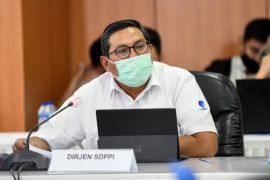"Several studies indicate that every 10 percent increase in teledensity would raise the GDP by as much as 0.7 percent," Niken Widiastuti stated.Jakarta (ANTARA News) - Every 10 percent rise in broadband penetration will increase the gross domestic product (GDP) by nearly 1.3 percent, Information and Public Communications Director General at the Communications and Information Technology Ministry Rosarita Niken Widiastuti stated.
"Several studies indicate that every 10 percent increase in teledensity would raise the GDP by as much as 0.7 percent," Widiastuti stated in her opening remarks at the meeting of the Board of Directors of the Confederation of ASEAN Journalists here on Friday.
She noted that this fact demonstrated that Information and Communication Technology (ICT) is able to boost public welfare, as it supports creativity and innovation.
According to Widiastuti, the development of ICT supports one of the Association of Southeast Asian Nations (ASEANs) sustainability agenda comprising connectivity that is built through verbal, non-verbal, and personal communication.
"Hence, mass communication, including print and electronic media, as well as communication infrastructure, are significantly needed," Widiastuti noted.
She explained that some areas of ICT have development potential in Indonesia coupled with an increase in the number of internet users and the growth in mass media.
"A survey in 2012 showed that there are 120 million active Facebook users in the ASEAN community," she stated.
"Currently, there are 132 million internet users in Indonesia, of which 95 percent of 63 million have Facebook and Twitter accounts," she said, adding that 88 million Facebook users have placed Indonesia as the worlds fourth-largest Facebook user country behind India, the US, and Brazil.
Meanwhile, more than 50 million Twitter users in the country place Indonesia as the worlds fifth-largest twitter user community after the US, Brazil, Japan, and the UK.
In addition, there are 15 private television stations, 390 local television broadcasters, four million paid television subscribers, 415 newspapers, 495 magazines, 257 tabloids, and 5.3 million blogs.
"Such media presence holds enough potential to ensure socialization and influence the people of ASEAN member states. The concern is regarding the willingness of the media to actually perform its role," Widiastuti emphasized.
She expressed hope that the media will highlight the values of idealism to fulfill the publics right to knowledge by providing accurate, factual, correct, educative, inspirational, enlightening, and empowering information. (*)
Editor: Heru Purwanto
Copyright © ANTARA 2017








